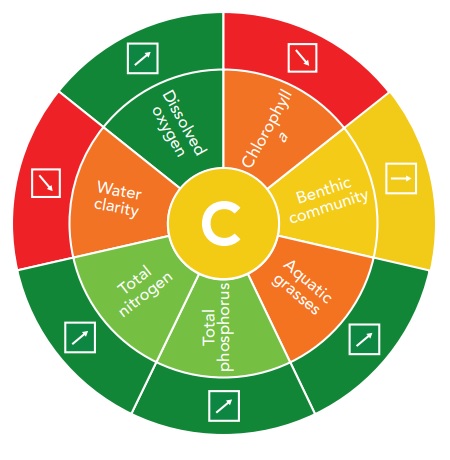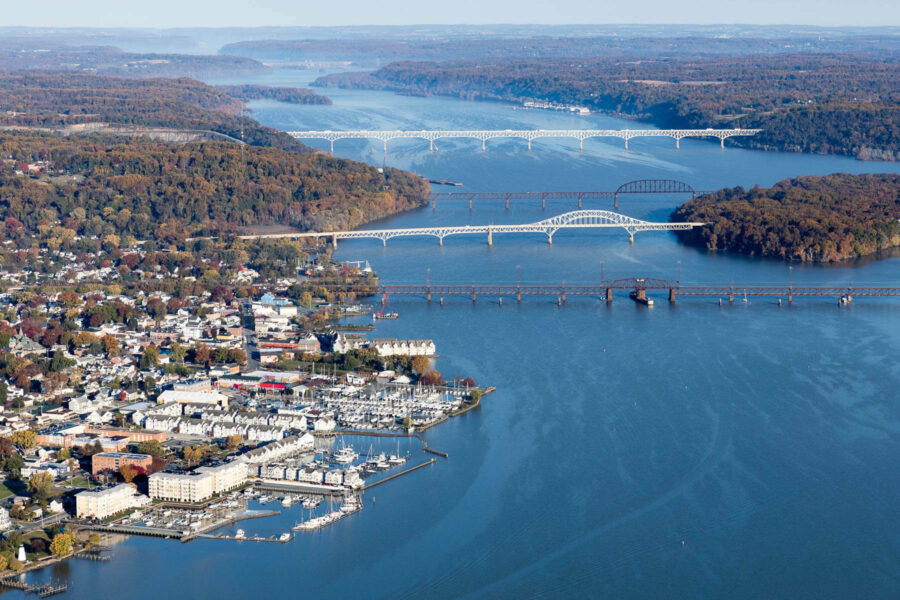The latest Chesapeake Bay Report Card shows that the determined work to reduce pollution in Lancaster County waterways is paying off, Allyson Gibson says.
“Lancaster County is a key element of the Bay watershed’s restoration work and is helping to drive success,” Gibson, executive director of Lancaster Clean Water Partners, told One United Lancaster.
Pennsylvania is part of a major multi-state effort to limit the flow into the bay watershed of sediment and agricultural nutrients, principally nitrogen and phosphorus, to restore the bay to health. The annual report cards, compiled by the University of Maryland Center for Environmental Science, track the initiative’s progress.

The report card for 2022, released last month, gives an overall grade of “C,” but notes “significantly improving trends over time.”
The bay’s health score has increased by six points in two years. The center’s report notes improvements in water clarity, nitrogen, phosphorus and aquatic grasses.
Lancaster’s region, the Lower Susquehanna, received an overall ecological score of C+.
Peter Goodwin, president of the center, said the trajectory of improvements is in the right direction but “we need to pick up the pace of restoration.”
A competing assessment, by the Chesapeake Bay Foundation, uses a somewhat different set of indicators. It is more pessimistic, giving bay health a grade of D+.
Lancaster County is the Pennsylvania county responsible for the most bay pollution, and consequently is the state’s No. 1 focus for remediation efforts. Millions of dollars are being directed here for restoration projects, including $3.5 million in Lancaster County’s American Rescue Plan Act funds.

Farmers countywide are being encouraged to implement “best management practices,” or BMPs, to reduce or eliminate runoff of manure, fertilizer and sediment into waterways.
“Organizations are busy planting trees along the edges of streams, installing projects to slow down and filter stormwater, engaging community members from diverse areas and backgrounds and planning ahead for better land use and economic development opportunities,” Gibson said.
Those efforts pay off not only in better water quality downstream, but locally as well, she said. The Susquehanna River Basin Commission’s website provides a range of data on regional watersheds, including recent readings from in-stream monitors.
Lancaster city, meanwhile, is under a federal order to eliminate overflows from its sewer system, caused when the runoff from heavy rainstorms mixes with sewage at volumes that exceed the capacity of its treatment system. It is planting rain gardens, tightening its stormwater regulations and installing underground collection tanks, efforts that collectively cut stormwater flows by tens of millions of gallons a year.
Environmental justice
This year, for the first time, the Chesapeake Bay Report Card includes an Environmental Justice Index. Created by federal health and human service agencies, the index incorporates data reflecting health, social vulnerabilities and environmental burdens.
Broadly speaking, suburban areas tend to score comparatively well in the index; rural and urban areas do comparatively worse.
“We need to have healthy communities to ensure that we achieve a healthy Chesapeake Bay,” Bill Dennison, vice president for science application at the University of Maryland Center for Environmental Science, said in a statement.
“Addressing environmental justice is critical to ensure that restoration enhances long-term sustainability of the Chesapeake Bay watershed in an equitable way.”
The jurisdictions involved in bay remediation are under a federal mandate to achieve a set of 10 pollution reduction goals by 2025. While they are expected to fall short, Dennison, like Goodwin, emphasized that real progress is being made.
“We just need to tighten our belts and keep improving,” he said.








